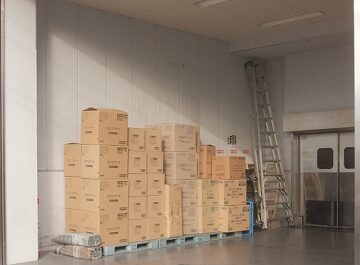As any manufacturer knows, raw materials are essential in the production of finished goods.
Without a reliable supply of raw materials, production can come to a halt, resulting in lost sales and reduced profitability.
Therefore, it is crucial for companies to determine the best procurement method to ensure a steady supply of raw materials at competitive prices.
There are two main procurement methods: buying raw materials outright or contracting to purchase them.
Each method has its own advantages and disadvantages, which we will discuss in this blog post.
Additionally, we will explore alternative methods and the factors that should be considered when deciding on the best procurement method to use.
But before we discuss further, make sure you have also joined the scmguide telegram channel so you don’t miss the latest post notifications from this blog and get more insights about other supply chain management topics.
Table of Contents
Buying raw materials outright
Buying raw materials outright means purchasing them at the time they are needed for production.
This method provides flexibility, as companies can purchase the exact quantity of raw materials needed, and only pay for what they use.
Additionally, companies can take advantage of price fluctuations, buying when prices are low and storing the raw materials until they are needed.
However, there are some disadvantages to buying raw materials outright.
For example, there may be a delay in production if the raw materials are not available when needed.
Additionally, the company may need to pay for storage and transportation of the raw materials until they are used, which can add to the overall cost.
Contracting to purchase raw materials
Contracting to purchase raw materials means entering into an agreement with a supplier to purchase a specified quantity of raw materials over a set period of time.

This method provides price stability, as the price is agreed upon in advance and is not subject to market fluctuations.
Additionally, contracting can provide quality assurance, as suppliers may be required to meet certain standards in order to fulfill the contract.
However, there are also some disadvantages to contracting.
For example, the company may be locked into a price that becomes uncompetitive if market prices drop.
Additionally, if the company’s production needs change, it may be difficult to adjust the contract to reflect those changes.
You might also like:
- Navigating Office Politics in Supply Chain Management: Strategies for Success
- Manual Handling vs. Material Handling Equipment: Which One is Better?
Alternative procurement methods
In addition to buying outright and contracting, there are alternative procurement methods that companies can consider.
Spot purchasing
Spot purchasing involves purchasing raw materials on the spot market, meaning buying them at the current market price with no contract in place.
This method can provide flexibility and allow companies to take advantage of market fluctuations.
However, it can also be risky, as prices can be volatile, and there is no guarantee of supply.
Blanket orders
Blanket orders are agreements between a supplier and a buyer that set the terms of a long-term purchasing relationship.
They provide flexibility, as they allow companies to purchase raw materials as needed, without committing to a specific quantity.
However, they may not provide price stability and may require close monitoring to ensure that the terms are being met.
Consignment
Consignment involves placing raw materials at the buyer’s facility until they are needed.
The company only pays for the raw materials when they are used.
This method can provide cost savings by reducing inventory carrying costs and improving cash flow.

However, there may be additional costs associated with storage and transportation, and the company may not have immediate access to the raw materials.
How to decide on the procurement method to use
When deciding on the procurement method to use, there are several factors that should be considered.
Market conditions
The current market conditions should be evaluated to determine if there is volatility in pricing or supply.
This can help determine if a contract or spot purchasing is the best option.
Supplier relationship
The relationship with the supplier should be evaluated to determine if a long-term partnership is beneficial.
If so, a contract may be the best option.
Cash flow
The company’s cash flow should be evaluated to determine if it can handle the upfront costs associated with buying raw materials outright, or if a consignment method would be more appropriate.
Production needs
The company’s production needs should be evaluated to determine if a flexible method, such as spot purchasing or blanket orders, is needed to accommodate changes in demand.
Quality assurance
The company’s quality assurance needs should be evaluated to determine if a contract or consignment method is needed to ensure consistent quality.
Cost
The overall cost of each procurement method should be evaluated, including any storage and transportation costs, to determine which method is the most cost-effective.
You might also like:
- Fast Logistics vs. Cheap Cost: Which One is More Important?
- Make or Buy? A Guide to Making the Right Decisions
The best procurement method
Ultimately, the best procurement method will depend on the specific needs and circumstances of the company.
However, there are some general guidelines that can be followed.
For example, companies that require consistent quality and a steady supply may benefit from a contract or consignment method.
On the other hand, companies that require flexibility and the ability to take advantage of market fluctuations may benefit from spot purchasing or blanket orders.
It is also important for companies to regularly evaluate their procurement methods to ensure that they are still the best option.
Market conditions, production needs, and other factors can change over time, and a procurement method that was once the best choice may no longer be appropriate.
Conclusion
Procuring raw materials is a critical component of the manufacturing process.
Choosing the right procurement method can ensure a steady supply of raw materials at competitive prices, while choosing the wrong method can result in lost sales and reduced profitability.
Companies should evaluate the advantages and disadvantages of each procurement method, as well as alternative methods, and consider factors such as market conditions, supplier relationships, and production needs when making a decision.
By doing so, they can select the procurement method that best meets their specific needs and circumstances.
Hope it useful!
Also share this article with your colleagues so that they can benefit from it too. Join the scmguide telegram channel so you don’t miss the latest updates from this blog. All articles on this blog are free to use for any purpose, including commercial use, without the need for attribution.

 by
by 

